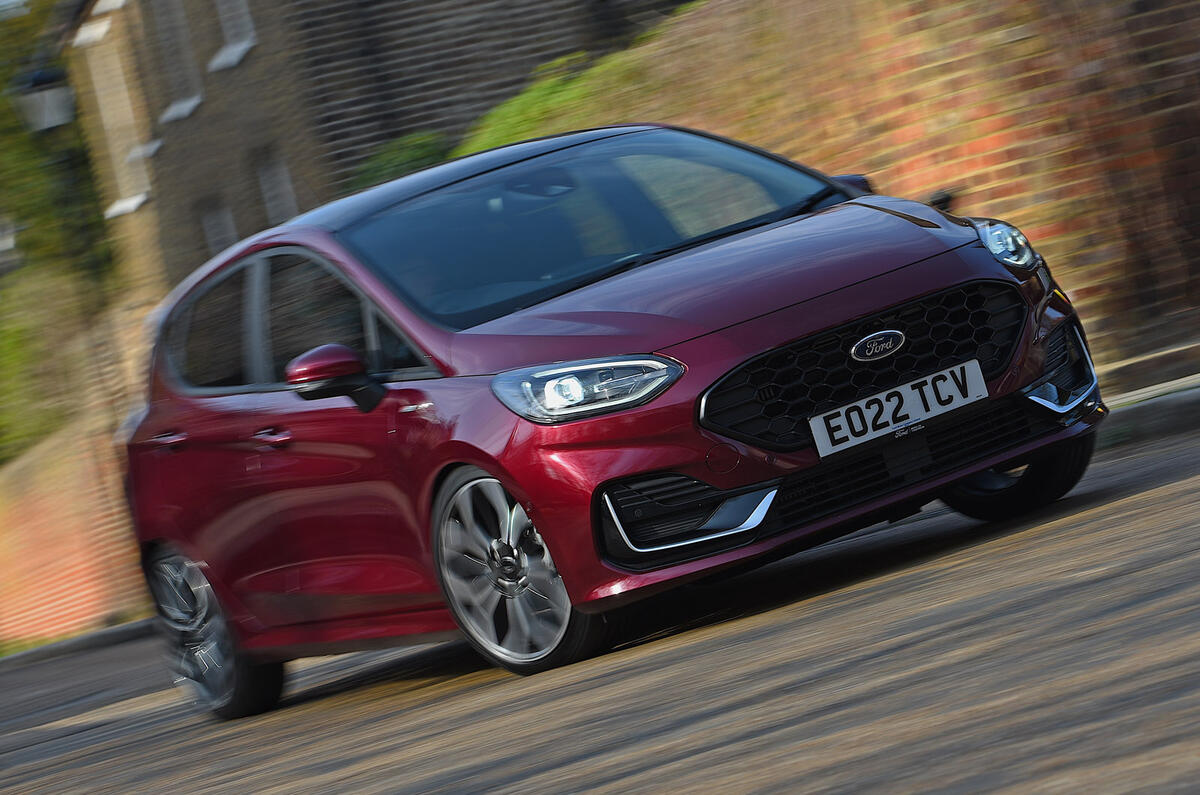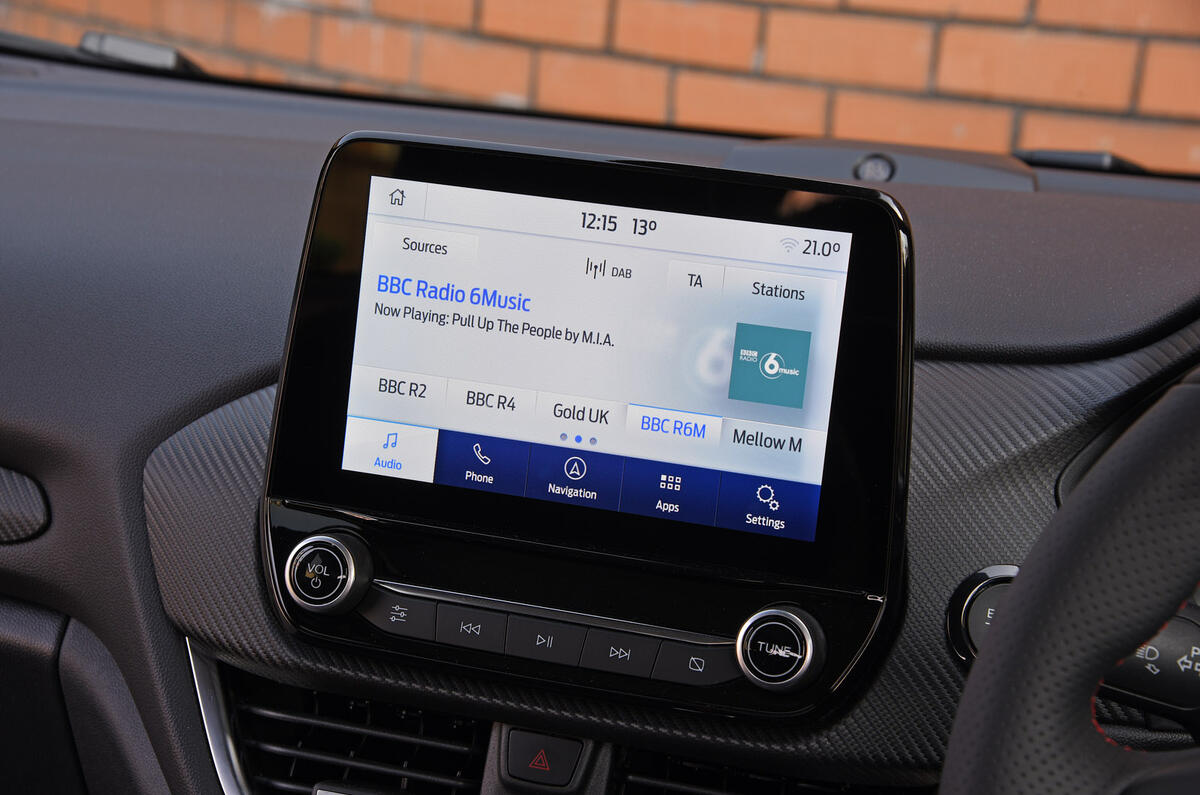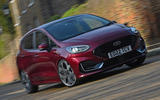What is it?
The phrase ‘Britain’s best-selling car’ is regularly found in a sentence containing reference to the Ford Fiesta. But no more. Last year, it didn’t even make the top 10 and was outsold even in Blue Oval showrooms by the Ford Puma.
The semiconductor shortage was behind the drop in sales, as Ford diverted more of the chips it had into more profitable models like the Puma, which competes in the same class. Yet rather than let the Fiesta’s long reign as Britain’s number one be followed by a period back in the ranks, it has made a series of changes to the car as part of this mid-life facelift to bring it back up the sales charts when the chips are no longer down.
The changes aren’t the biggest, admittedly. Remember: the Fiesta enters this facelift from a position of strength as one of the best-driving superminis that remains a compelling ownership proposition.

What's it like?
Those changes, then. Visually, the biggest changes are at the front, where there's a new design for the bonnet, headlights and grille, to where the Ford badge is relocated. There are new colour and wheel designs as well as a shuffle of the trim levels.
However, there are no mechanical changes to the chassis (which is not a bad thing at all, given how sweet the Fiesta is to drive) and the engine line-up remains unchanged.
It starts with a 99bhp version of Ford’s ubiquitous 1.0-litre turbocharged three-cylinder petrol engine, which higher up the range gets belt-integrated starter-generator mild-hybrid (MHEV) technology to be offered in 123bhp or 153bhp outputs, the latter tested here.
The familiarity of that engine and chassis mean, unsurprisingly, it’s more of the same from the Fiesta on the dynamic front. The handling is simply a joy at any speed; this is a car that can raise a smile no matter how mundane the corner or manoeuvre required.
As before, none of this involving handling is at the expense of ride comfort or quality. The car transmits to the driver exactly what the road surface is doing while absorbing and isolating from bumps with a sophistication a car in this class really has no right to.
It’s all backed up with an engine that remains one of the most characterful on the market. The 1.0-litre triple is vocal but sounds enthusiastic, rather than unrefined, and delivers excellent performance levels, particularly above 2000rpm when the turbocharger kicks in.































Join the debate
Add your comment
Fiesta MHEV ST Line Vignale doesn't exactly trip off the tongue does it? and what does it mean ST- Line indicates sporty but for £24.5k you could have a full fat Fiesta ST for this sort of money. I thought that the Blue Oval had dumped the Vignale trim just as the Ghia trim was dropped as the top of the range model. If £24.5 isn't bad enough adding nearly £4k of options beggars belief. Ford once had a towering lead in UK car sales but now things have changed,can't see that offering cars like this will reverse that trend
So all that battery tech and a 1.0 engine and you still only get 50mpg, no better than the heavier bigger 1.5 golf with COD. Fiesta really is beginning to show it's age in looks department too, still Ford have new trucks in the pipeline.
How the mighty have fallen
Vignale to Ford is surely like Taste the Difference in a Pound Shop.
Yards and yards of leatherette and overly padded trims.
Sub-par drivetrains and a crazy price point. Good luck fellas